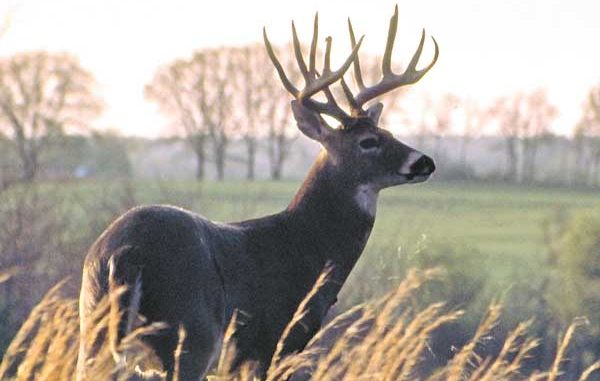
A few simple steps may fool ol’ Mossy Horns in December.
Deer are a naturally suspicious lot by nature.
They have well-honed senses that keep them in sync with their surroundings most of the year. There is a time, specifically the rut, when a big buck will ever-so-slightly let his guard down and hunters get an edge. But there is payback because it seems they make up for that lapse when the rut ends and the post-rut phase begins.
Bob Mathews has hunted deer for years and learned most of his late-season lessons the hard way, through experience. But he’s developed a few strategies along the way that make the post-rut period one of the season’s most productive times.
Most surprising of all, he’s discovered it’s not productive to hunt areas where the bucks were during the rut only a few weeks earlier.
“It seems the rut ends so abruptly,” Matthews said. “It probably occurs over a longer period of time than it seems. But bucks will be chasing does and doing things that gives us the opportunity to shoot them in specific areas. Then suddenly, they’re simply gone from those areas. Plus, they seem to regain their sense of survival, even to a higher degree than before.”
To take advantage of a buck’s 180-degree switch in sensibilities, Mathews also changes gears to put the odds back in his favor.
“During the rut, bucks, especially mature bucks, are focused on breeding,” he said. “A post-rut buck will have lost a significant portion of his body weight, and they’ll look undernourished. When the rut ends, it sometimes means the feeding binge begins. At this stage, big bucks seem to feed and once again become loners.”
Matthews said he simply focuses again on the food sources in the area as a key as he did during September and October.
“By late season, most croplands have been harvested, but sometimes they’re still productive places to hunt,” he said. “If there’s a grain field at the land you hunt that’s been only partially cut, that’s even better.
“Look for the back corners, small pockets along the field or an area where there’s thick cover adjacent to the food sources. These isolated areas with good food sources are prime places to attract big bucks.”
Another hunter who enjoys the late-season hunting is Bill Geddings. He likes the post-rut patterns deer utilize.
“A simple way to look at the best habitat to hunt is to check your property and hunt the most isolated, thick, dense cover you have,” Geddings said. “That’s where the deer, especially big bucks, will tend to go.
“The best buck hideouts will change from mountains to lowlands. Good examples are thick pine stands, swamps and scrub-oak thickets. Find an area that also has food, and you’ve got a winner.”
“When the rut ends, so does the season for a lot of hunters. That’s another plus as far as I’m concerned. Fewer hunters in the woods make it better for hunters looking for that late-season trophy.”
Geddings said a bow hunter can enjoy good odds during the late-season.
“A bow hunter can be successful because the dense growth where these animals are often found at this time of the year lends itself to bow hunting,” he said. “Picking the right stand site is important, and a climbing stand is effective because a hunter can hide his silhouette properly and keep the wind to the absolute advantage.
“Focus on the edges of bedding areas and catch them headed to or coming back from feeding areas.
“Sometimes they don’t get to the feeding areas until late at this time of the year. During early bow-hunting season, feeding areas can be great, and as much during the post-rut.”
Geddings said one of the biggest challenges to a bow hunter can be on very cold days when he’s wearing gloves and is weighted down with clothing.
“You’ve got to stay warm, a shivering bowhunter is not going to hit many deer,” he said. “Practice while wearing winter gear, including gloves. There’s a totally different feel to it with a lot of clothes layered on and with gloves. But with a little practice, it’s something you can get the feel of.”
Matthews said when the rut ends, the bucks often will be back at their home ranges. Sometimes deer will travel the same basic routes and work through the same funnels and necks as they did early in the season.
“The key is to catch them working from the bedding to the feeding area,” Matthews said. “I’ve found that the bigger deer are now going to be much more likely to be seen primarily very early and very late in the day. It’s still wise to spend a reasonable amount of time in the stand, but I don’t necessarily hunt all day during the post-rut.”
Mathews said scouting plays a big role during the post-rut, just as it does at any stage of the season.
“It’s possible to get lucky during the rut and happen onto a big buck without doing your homework,” Matthews said. “But the odds of that happening in the post-rut are ridiculously remote.
“During the late-season, the mid-day hours are when I do my scouting, that’s when I feel I have the least chance of not alerting a buck. I work the edges near where I think bucks are bedding, but I don’t bust in his front door. Call it subtle scouting, but I wear rubber boots to cut any scent, I’m very quiet and get in, find what I need to see and get out.
“While I’ll still usually see a lot of doe deer, the big bucks don’t move nearly as much as they did during the rut, thus the amount of fresh sign I expect to see drops considerably too.
“When I find fresh sign, I consider it important. A rutting buck may leave a lot of sign over a large area. But a post-rut buck doesn’t. When you can find fresh sign from a post-rut buck, you are likely in a hot area. Pick a stand site with the wind to your advantage and hunt it that very day.”
Matthews and Geddings agreed that setting up near areas where bucks had been rubbing and scraping earlier in the year are also basic areas to look for post-rut bucks. While their exact locations will likely change to thicker habitat, they typically return to their home ranges.
To score on a big post-rut buck, you’ve first got to spend time in the woods, which is a big change for many hunters.
Modify hunting perspectives from what was successful during the rut phase to what occurs during the post-rut. Finally, plan hunt to give you any edge you can get, such as a food sources, fresh sign and thick bedding areas.
You may discover that post-rut hunting can be well worth the effort.

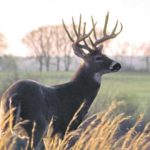
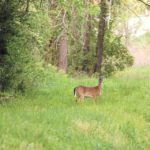
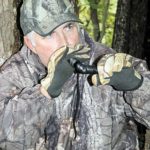
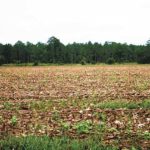



Be the first to comment